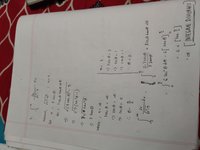The question:

My answer:

I looked up an online improper integral calculator which returned the same result that the integral diverges but it solved in a different way, my only question is, is this way of solving improper integrals using trig substitutions correct? I just need confirmations because my course instructor also did other improper integral probelms in another way using limits, should I resort to that instead?
My answer:

I looked up an online improper integral calculator which returned the same result that the integral diverges but it solved in a different way, my only question is, is this way of solving improper integrals using trig substitutions correct? I just need confirmations because my course instructor also did other improper integral probelms in another way using limits, should I resort to that instead?
